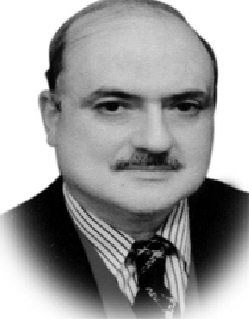Khalid Saleem
One occasionally comes across pieces in the media
drawing attention to the fact that many Third World
countries are ‘youth-heavy’, in that young people constitute the majority of their populations. The First World, on the other hand, is worried about the problem of ‘aging’. This does represent a paradox of sorts. The Land of the Pure figures in the category of ‘young entities’ in more senses than one. It is young in view of its year of creation; it is more so when one looks at its ever blooming population.
As far back as public memory goes, Man has been relentlessly searching for the secret of ‘long life’. Death, even at a ripe old age, holds a terror for most people. This is particularly true of persons who have led a blissful life, mainly at the expense of their less endowed fellow beings.
Scientific researchers, who represent a race apart, have invariably bent their energies towards discovering the elusive secret of ‘living longer’. Scientific research in this field, coupled with developments in the fields of medicine and nutrition, have contributed to a dramatic rise in life expectancy, especially in the more prosperous regions of this blessed planet. So far so good!
As a consequence of the above said, life expectancy has been pushed up a few notches; but to what end and for what purpose? Through the benefit of hindsight, one cannot help noticing that this single-minded quest for long life has been pursued singularly but with hardly a sense of purpose. It is this realization that now appears to be coming back to haunt the planners in the First World.
Taking the example of the First World, added to the single-minded determination to have people ‘live longer’, there has been added a simultaneous drive to bring down the ‘birth rate’. These two developments have contributed to a state of affairs in which old people are set to outnumber the young, sooner than anyone expected. Some years back, the Center for International and Strategic Studies, a public-policy Think Tank in Washington, had raised the alarm on this score. ‘Global aging’, falling fertility rate, untenable pension costs with fewer tax payers to support them as well as ‘financial market chaos’ as the developed countries ‘grow old’, were cited as causes for serious concern.
It was also given out that human life expectancy had made greater gains in the past fifty years or so, than in the past five thousand years. This is only half the tale. It was apparent that the planners would need to confront what, though appearing to be a boon, may prove to be a bane. Statistics in this regard make interesting reading. In developed countries, the percentage of population aged over sixty-five may well rise to twenty-seven by 2050, as against fifteen at the turn of the century. Japan is already way ahead in terms of its graying population.
The question that presents itself, begging for an answer is: where does the world go from here? And, what is more relevant to us, where do the developing countries like this blessed land fit into the model? All in all, the growing percentage of the aged spells disaster not only from the economic but also from the ecological point of view. It just goes to prove that that Man’s effort to go one up on nature is, at best, ill-advised. Nature works towards an optimum balance in everything. Mankind would do well not to make ham-handed attempts to upset that balance.
Needless to add, developing countries are ever at the receiving end. Nothing seems to go right. As the events of the recent past have shown, even having a surfeit of young people has its drawbacks. Young people are restive and impatient. They want everything accomplished in double quick time. Sparing time to contemplate, appears to them a waste of precious moments. The secret would lie somewhere between the impatient yearnings of the young and the slow and steady approach of the seniors. How to achieve the optimum is no easy task!
While the young have their strong points – among them enthusiasm and fresh ideas reinforced by the latest technology – there is no substitute for experience. It is this experience that teaches humankind how to avoid pitfalls that could lead to disaster, as well as how to temper their decisions with circumspection and good sense. The young are by definition impetuous and rash. A middle path is what is or, at least should be, advisable.
The developed countries that are worried about ‘global aging’ do have a point. But, then, this is the price they have to pay for tinkering with the laws of nature. Nature on its own always tends to develop a balance of sorts that keeps things well in check. Humankind, in its unbridled enthusiasm, moves in a way as to upset this balance, thus setting in motion events that are beyond its control. Nature should be treated with the respect that it deserves. Mankind in its turn needs to be aware of its limitations and not attempt to transgress them.
On another note, there are always exceptions to the rule. It will not do to overlook the case of those regions of the world that are naturally known for longevity. Hunza Valley in Pakistan is one such area. If one looks closely, nature has its own fine-tuning mechanism that is missing in the efforts of the scientific researchers. In places like the Hunza Valley, nature has assured that robust good health goes with longevity. Most of the aged residents of Hunza Valley – quite a few of them over 100 years of age – remain active workers and thus no burden on society. Can the international scientific community match that? One doubts it!
— The writer is a former ambassador and former assistant secretary general of OIC.










